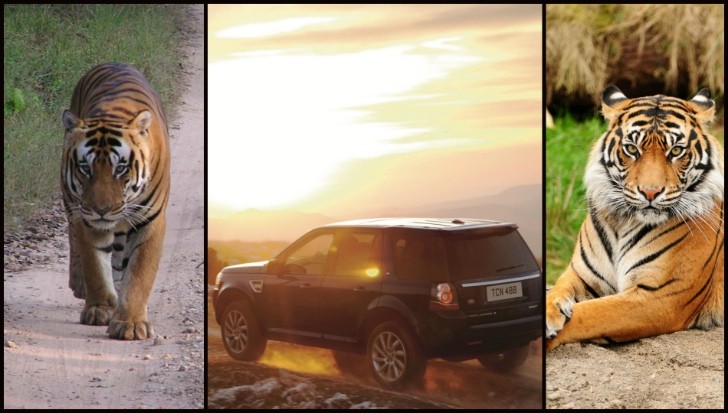Tigers are the largest members of the feline family, and yet they are also the most vulnerable. Pushed out of their habitat, killed by farmers and hunted for sport and personal gain, India's tigers have reached a tipping point. Over the past century, their numbers have steadily declined from hundreds of thousands to as few as 3,500.
From the Land Rover Defenders that were once used for safaris, Land Rover has turned an altogether different page today. The British company is joining the fight to protect these magnificent animals with a donation made to the Born Free Foundation in India.
The go-anywhere capabilities of the Land Rover Freelander have been proven in just about every corner of the globe, from the Arctic to the Amazon's rain forests, so it should have no problems dealing with India's rough terrains. The SUV's all-terrain capabilities will enable workers to reach areas otherwise inaccessible.
Here's what Mark Cameron, Brand Experience Director at Jaguar Land Rover, said: “Land Rover’s on-going partnership with the Born Free Foundation has already helped support some of the Foundation’s most important projects in the UK, Kenya, Ethiopia, South Africa and Sri Lanka. With this addition of the Land Rover Freelander to the Satpuda Landscape Tiger Programme, I believe together we will now make a real contribution to the conservation of the endangered Tiger in India."
India is, of course, the second home of the Land Rover. Tata Motors owns both it and the Jaguar brand. Last year during an eventful launch for the all-new Range Rover, many journalists were invited from Europe to drive across the country in the SUV.
Quick facts about the Bengal tiger: they are solitary animals, as opposed to lions, which live in packs. An average example will live up to 10 years in the wild and grow to weigh up to 500 lbs ( 227 kg) in the case of a male. Most of the time they avoid contact with humans, but there have been some records of man eaters.
The go-anywhere capabilities of the Land Rover Freelander have been proven in just about every corner of the globe, from the Arctic to the Amazon's rain forests, so it should have no problems dealing with India's rough terrains. The SUV's all-terrain capabilities will enable workers to reach areas otherwise inaccessible.
Here's what Mark Cameron, Brand Experience Director at Jaguar Land Rover, said: “Land Rover’s on-going partnership with the Born Free Foundation has already helped support some of the Foundation’s most important projects in the UK, Kenya, Ethiopia, South Africa and Sri Lanka. With this addition of the Land Rover Freelander to the Satpuda Landscape Tiger Programme, I believe together we will now make a real contribution to the conservation of the endangered Tiger in India."
India is, of course, the second home of the Land Rover. Tata Motors owns both it and the Jaguar brand. Last year during an eventful launch for the all-new Range Rover, many journalists were invited from Europe to drive across the country in the SUV.
Quick facts about the Bengal tiger: they are solitary animals, as opposed to lions, which live in packs. An average example will live up to 10 years in the wild and grow to weigh up to 500 lbs ( 227 kg) in the case of a male. Most of the time they avoid contact with humans, but there have been some records of man eaters.

